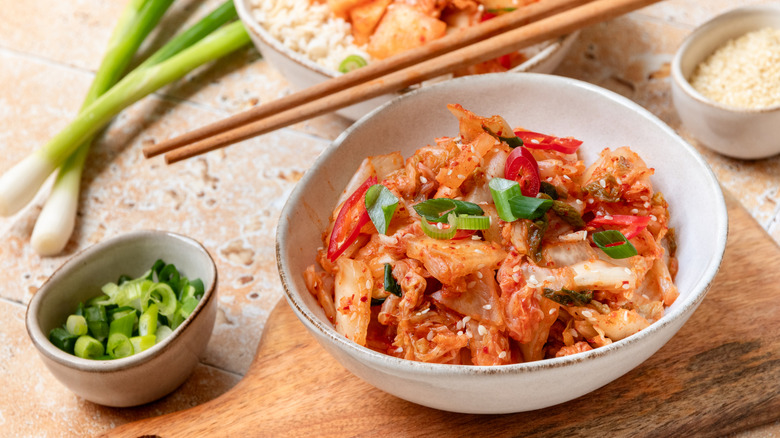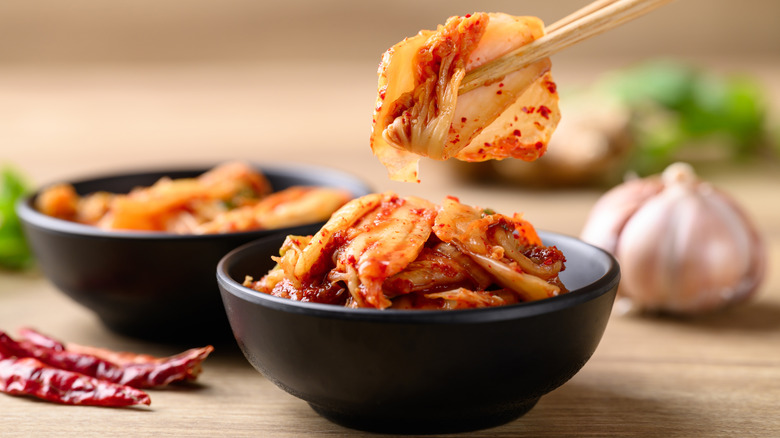The Simple Trick For Making Homemade Kimchi With A Subtle Twist
Sour, salty cabbage kimchi is a well loved and easily recognizable Korean side dish found in restaurants, grocery stores, and family refrigerators alike. Although classic kimchi is fairly straightforward — marinated and fermented napa cabbage with a few important seasonings — the supporting ingredients can be a bit divisive. Do you add brown sugar, white sugar, green plum syrup, or no sweetener at all? Do you use fish sauce, fermented shrimp, both, or neither? Do you add all sorts of vegetables like radishes and carrots or stick with cabbage alone? Ultimately, kimchi recipes vary from family to family, recipe to recipe, and tradition to tradition, and the best version of kimchi is simply the one you like to eat most.
If you're ready to iterate on the textbook kimchi recipe, we have a few subtle twists in mind. But first, it's important to note which ingredients shouldn't be messed with too much. Even if you love garlic, we wouldn't recommend adding a ton to your kimchi. Too much garlic will play against the strong fermented flavors and make your resulting dish taste bitter. Too much ginger will turn your kimchi sticky. Too much sweetener can easily tip your recipe into disaster territory, and too much gochugaru will make your kimchi unpalatably hot.
When it comes to tailoring homemade kimchi to your tastes, Sungchul Shim, the chef and owner of two New York City restaurants, Mari and Kochi, has important advice: add herbs. Particularly when introduced at the end of the fermenting process, herbs can have a subtle impact on your favorite side dish's flavors without changing what you love about the classic.
How herbs can subtly spice up a classic kimchi recipe
Speaking exclusively with Chowhound, chef Sungchul Shim explained how herbs can enhance the flavor of kimchi without overbalancing any of its flavors. Some herbs are especially well suited to kimchi, at least when added with a light touch. On the brunch menu at his restaurant Kochi, Shim features basil kimchi. "It pairs well with the spice and tanginess," he says. Adding basil leaves to your standard kimchi recipe brings in a "refreshing herbal note," as Shim explains. Shim also offers chive kimchi on Kochi's chef's menu. Chives have a mild garlic and onion flavor, similar to scallions, which are a perfect pairing for kimchi.
But Shim's suggestions don't stop there. "Try cilantro for a citrusy twist or shiso for a savory depth," he says. Shiso leaves are a smaller, mintier version of perilla leaves, which are often a kimchi staple themselves. Shiso leaves have a crisp, herbaceous taste, while perilla leaves have a strong, vegetal, almost licorice-like taste. Both can be added to kimchi to round out its flavor although, as Shim notes, everything should be added in moderation. "Use herbs sparingly to keep the traditional flavor balanced," he says.

